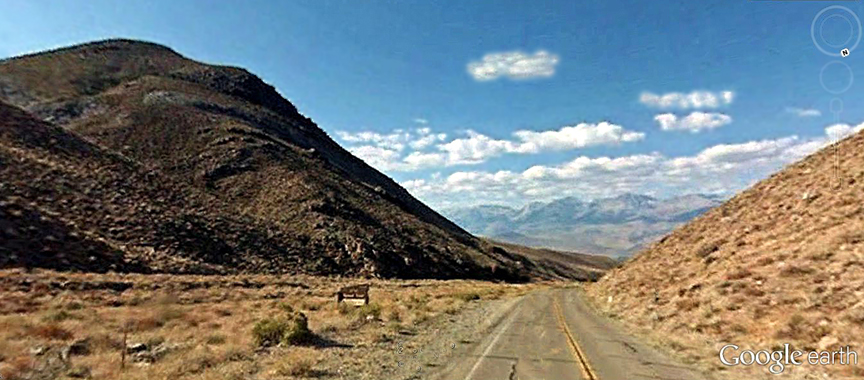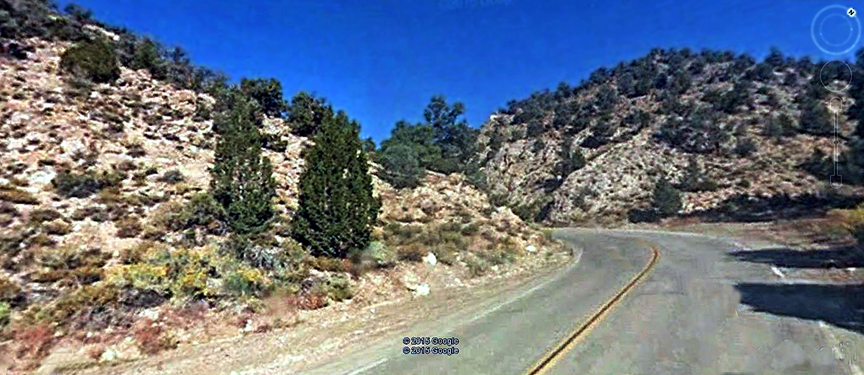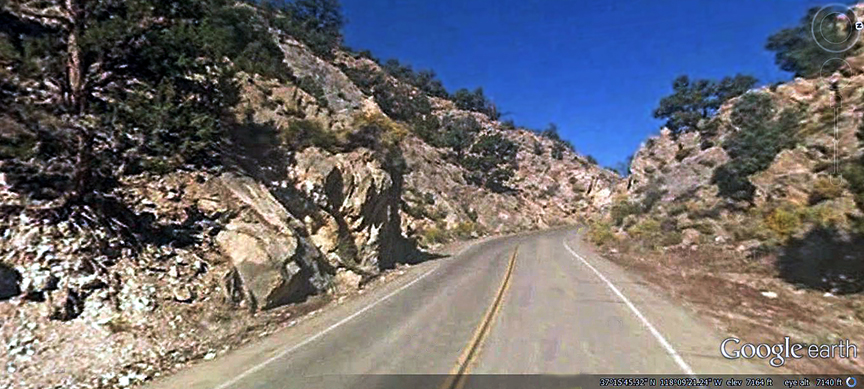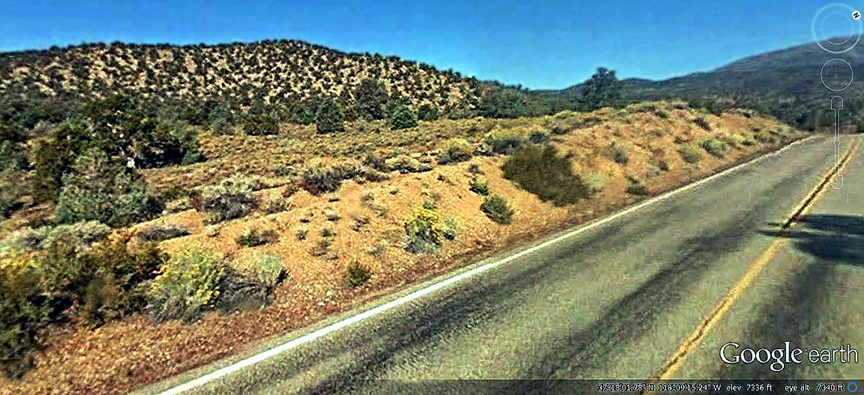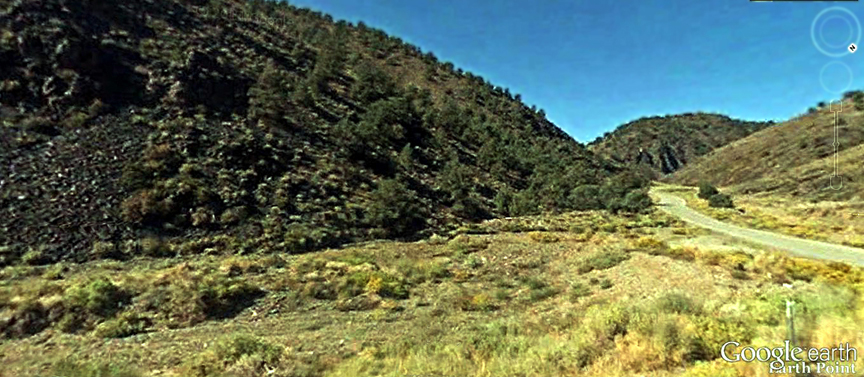| Directional perspective is southwest along
Payson Canyon, downgrade (north to northeast) from Westgard Pass.
Here, State Route 168 cuts through rocks of ever greater primordial
age. All slope exposures in view consist of quartzitic sandstones
and gray interbedded mudstone and shale of the early Cambrian
Andrews Mountain Member (around 526 to 522 million years old)
of the Campito Formation, which immediately underlies the Campito's
Montenegro Member, seen in the photograph immediately above;
and near the top (youngest horizons) of the Andrews Mountain
Member, in strata close to 522 million years ancient, the oldest
trilobites in North America--and possibly the world--have been
discovered, an Olenellid form resembling the Siberian trilobite
Repinaella. Image taken by the Google Earth Street View
Car; I cropped and processed it through photoshop. |
